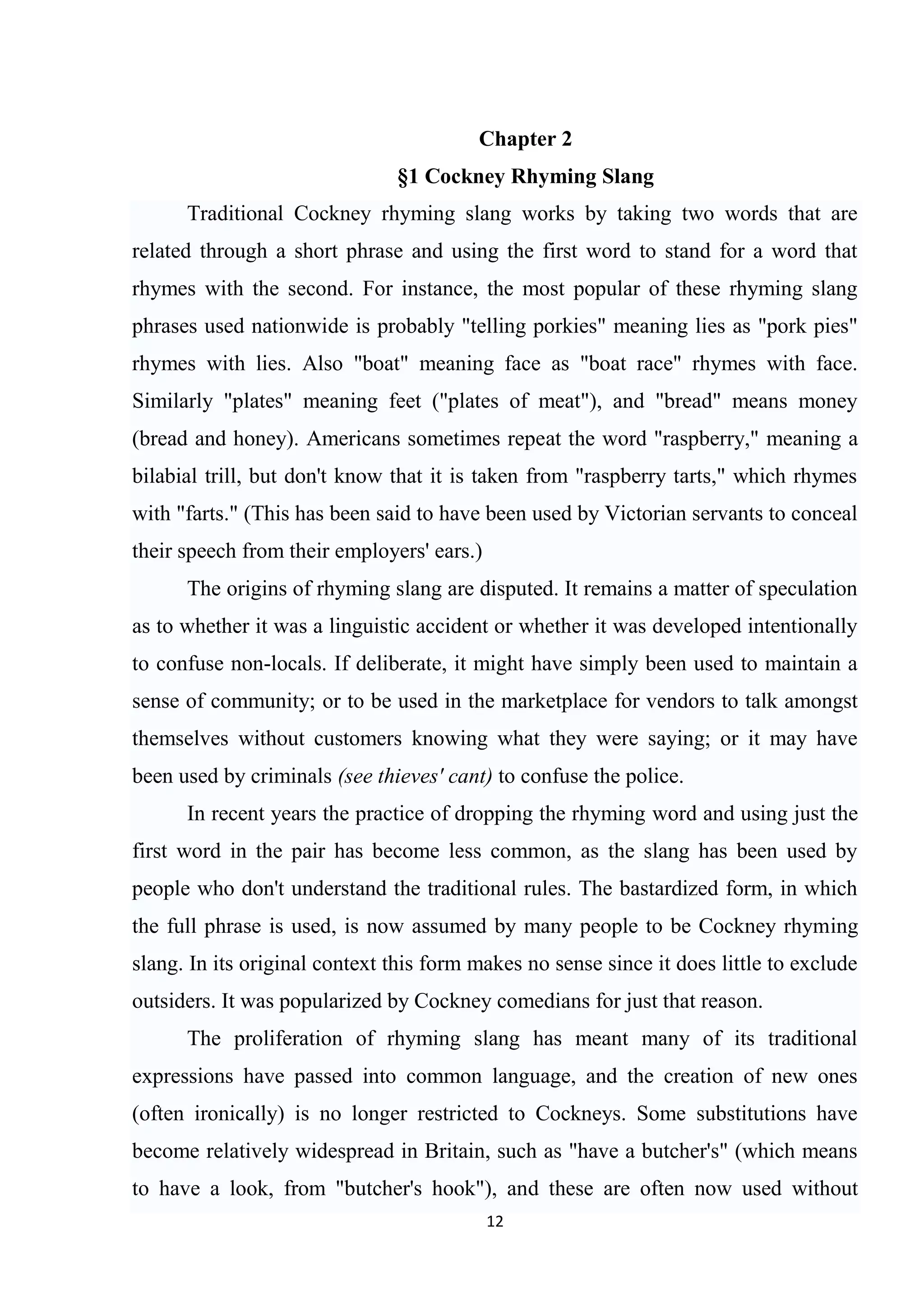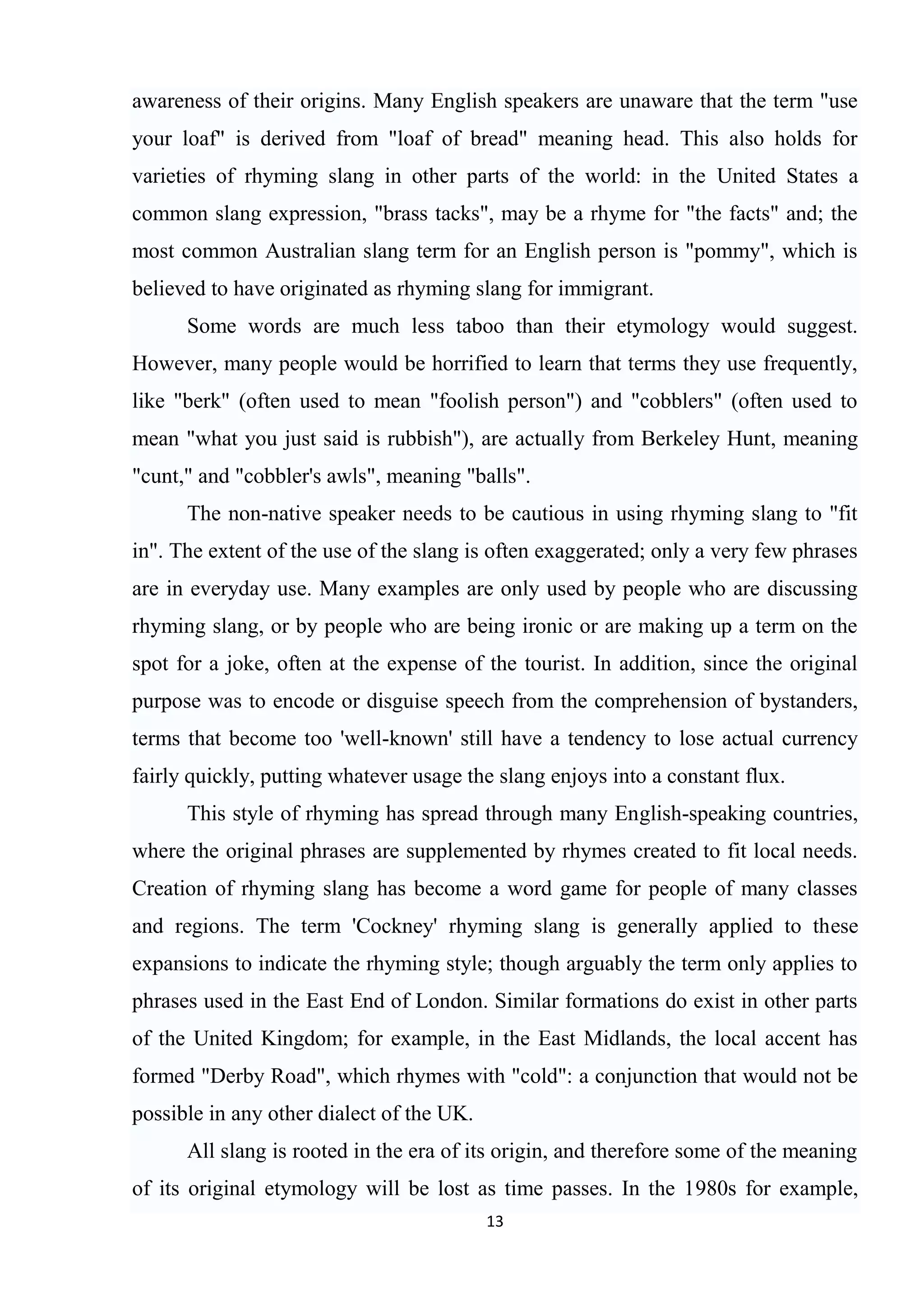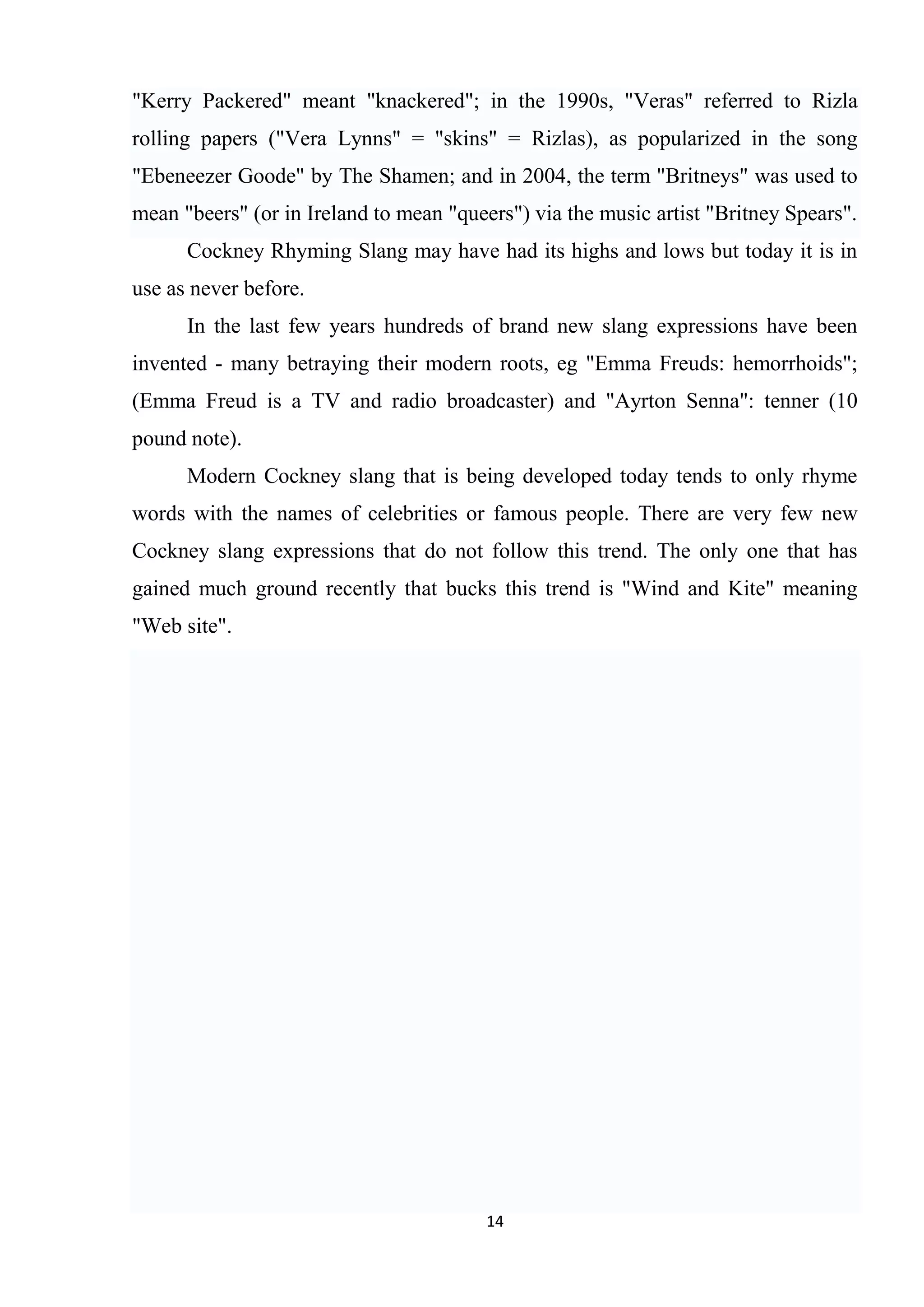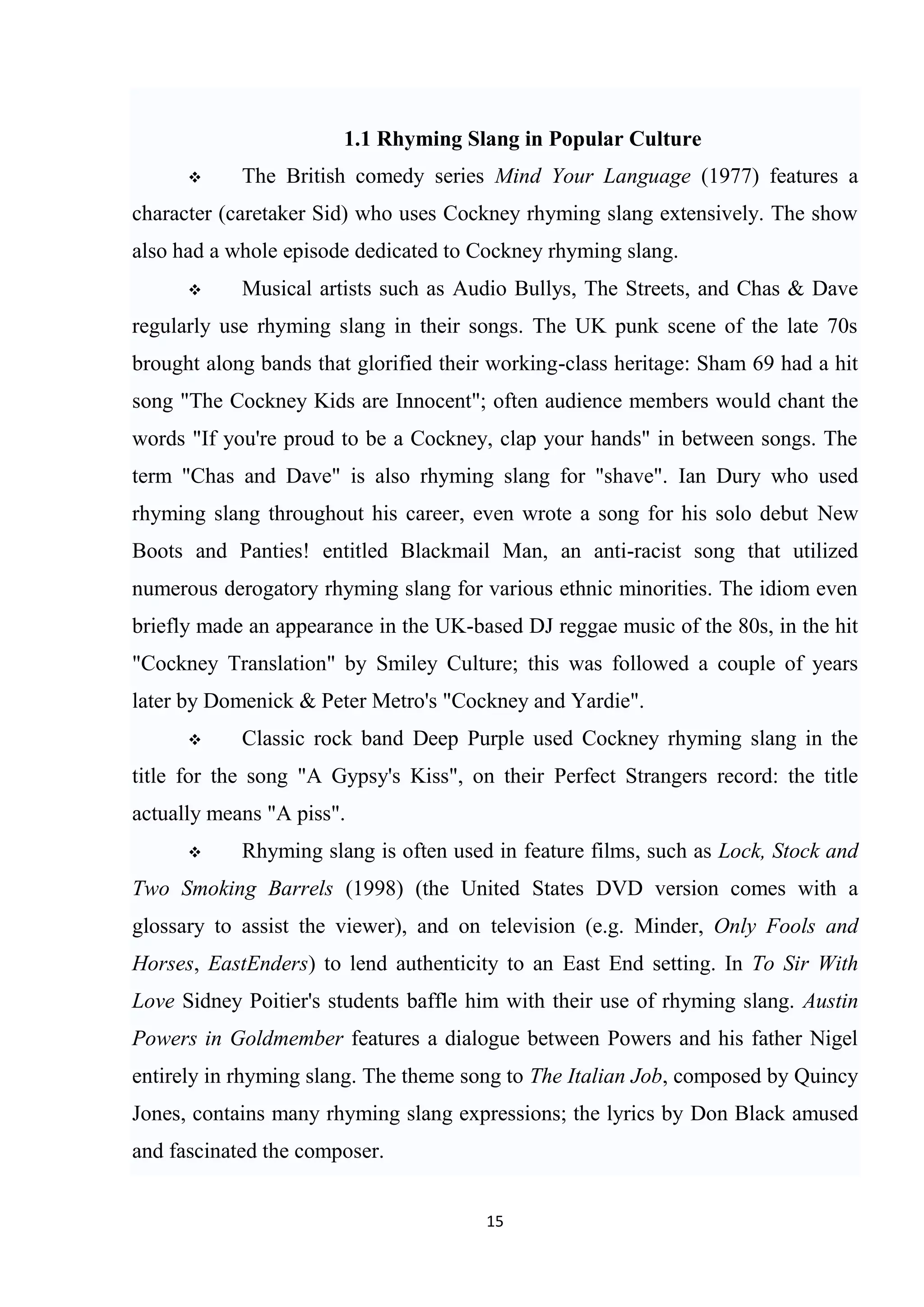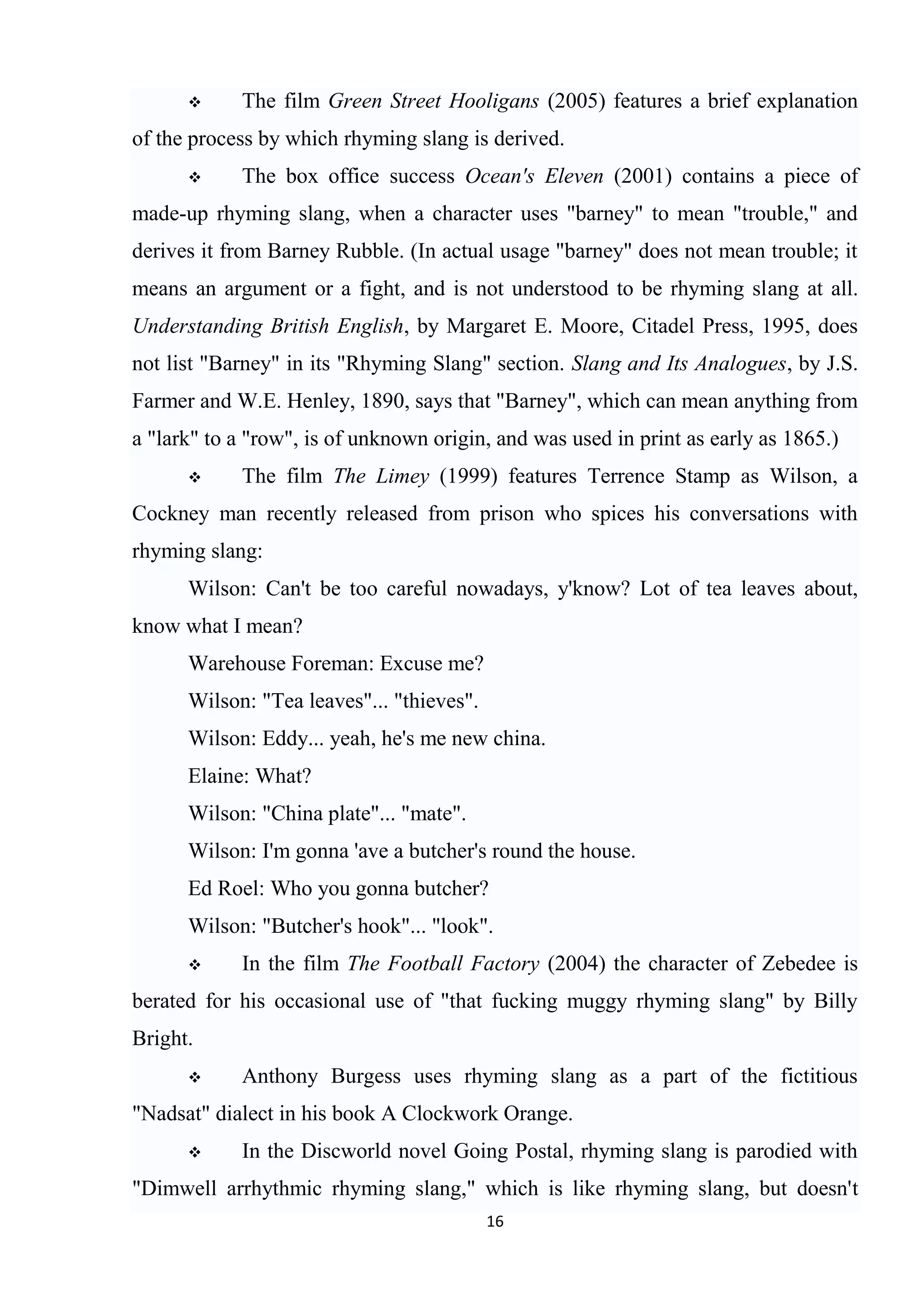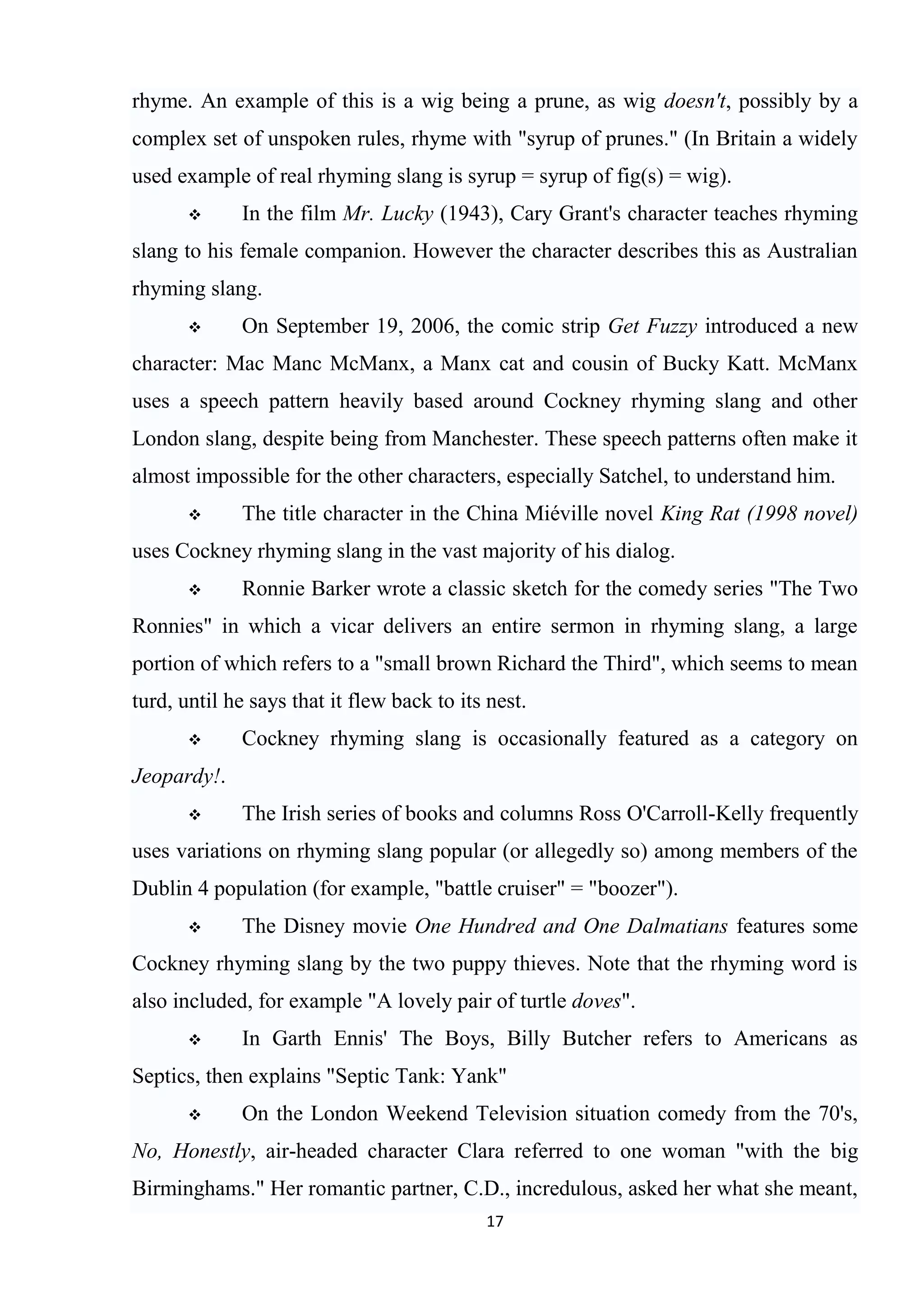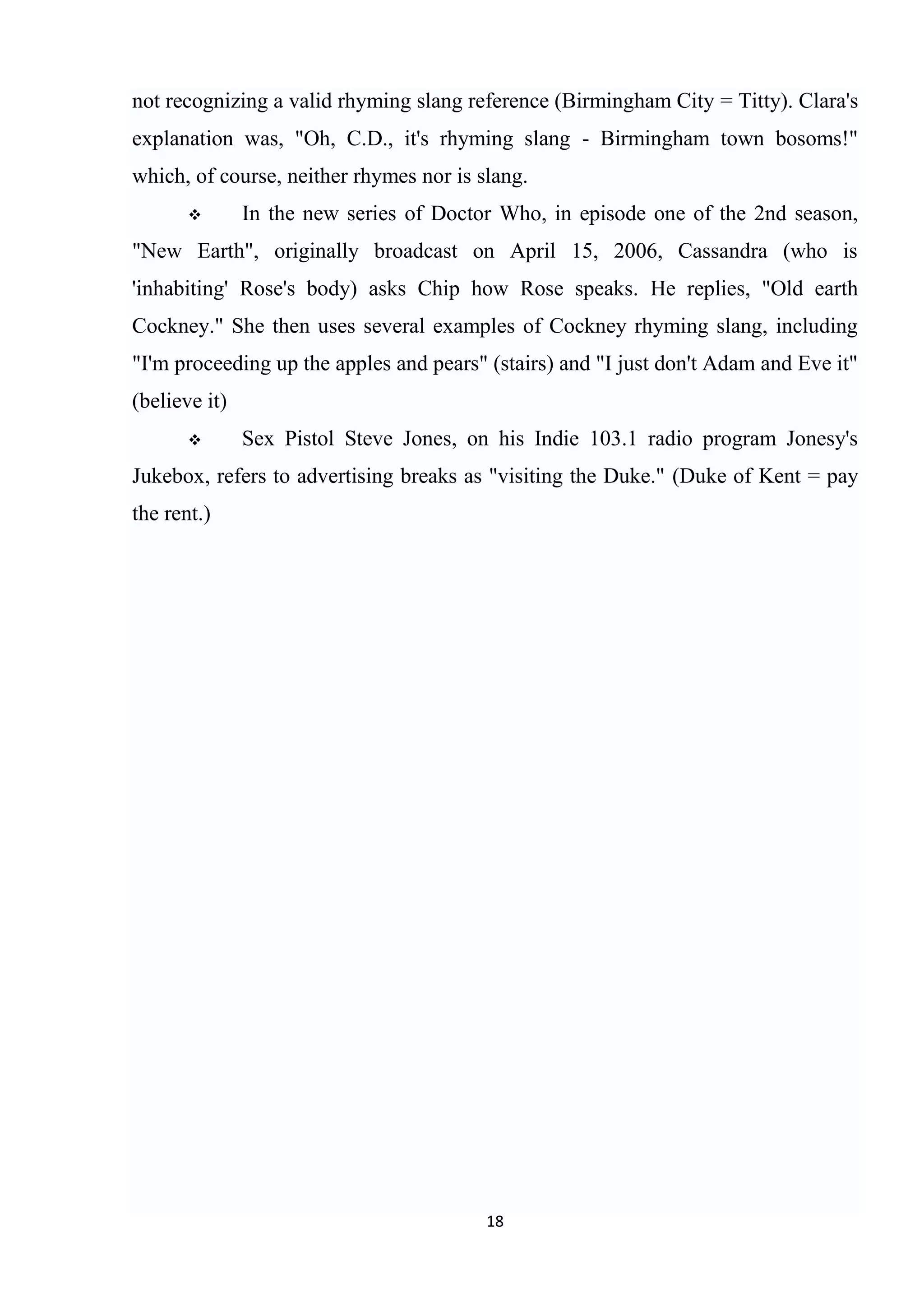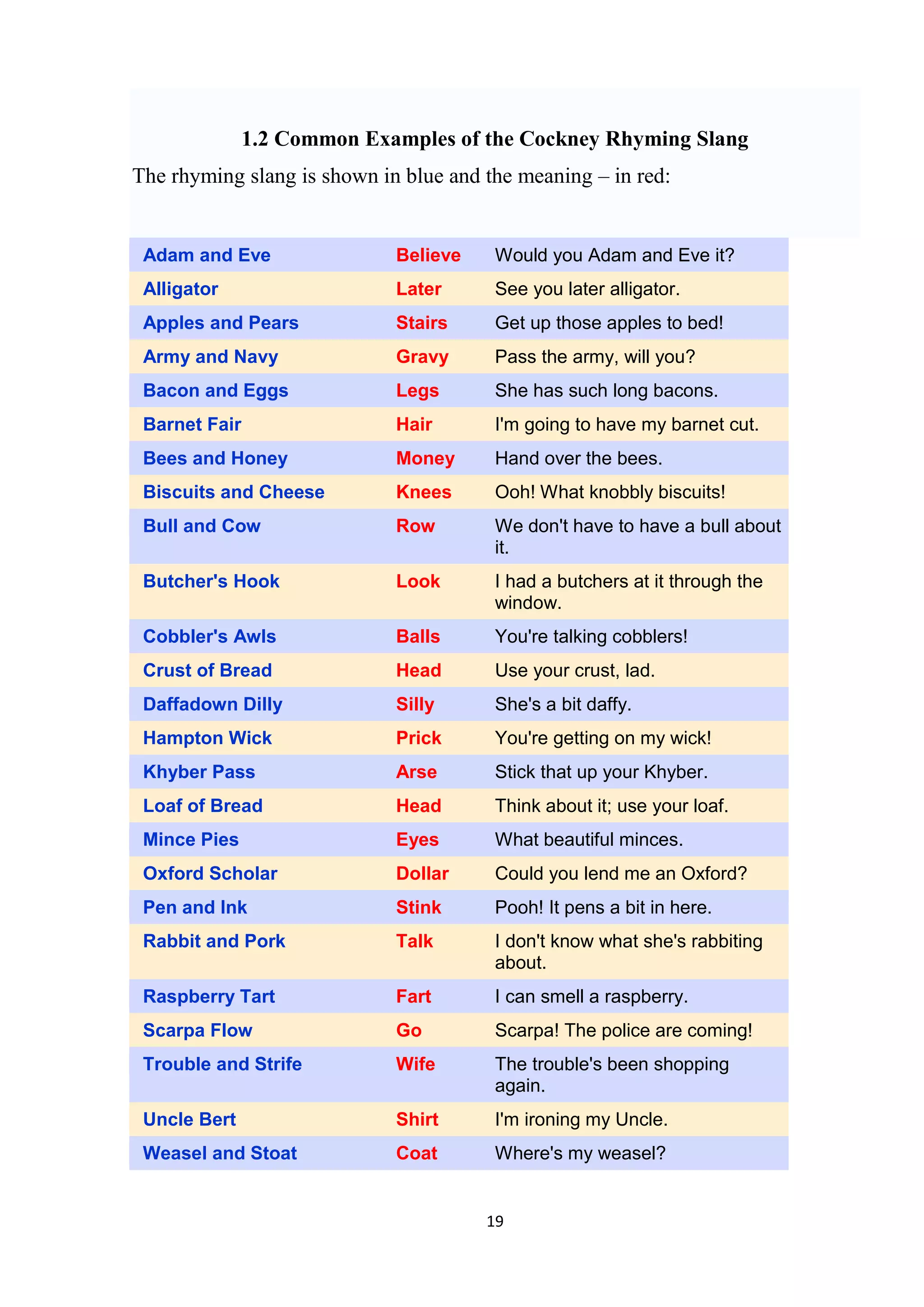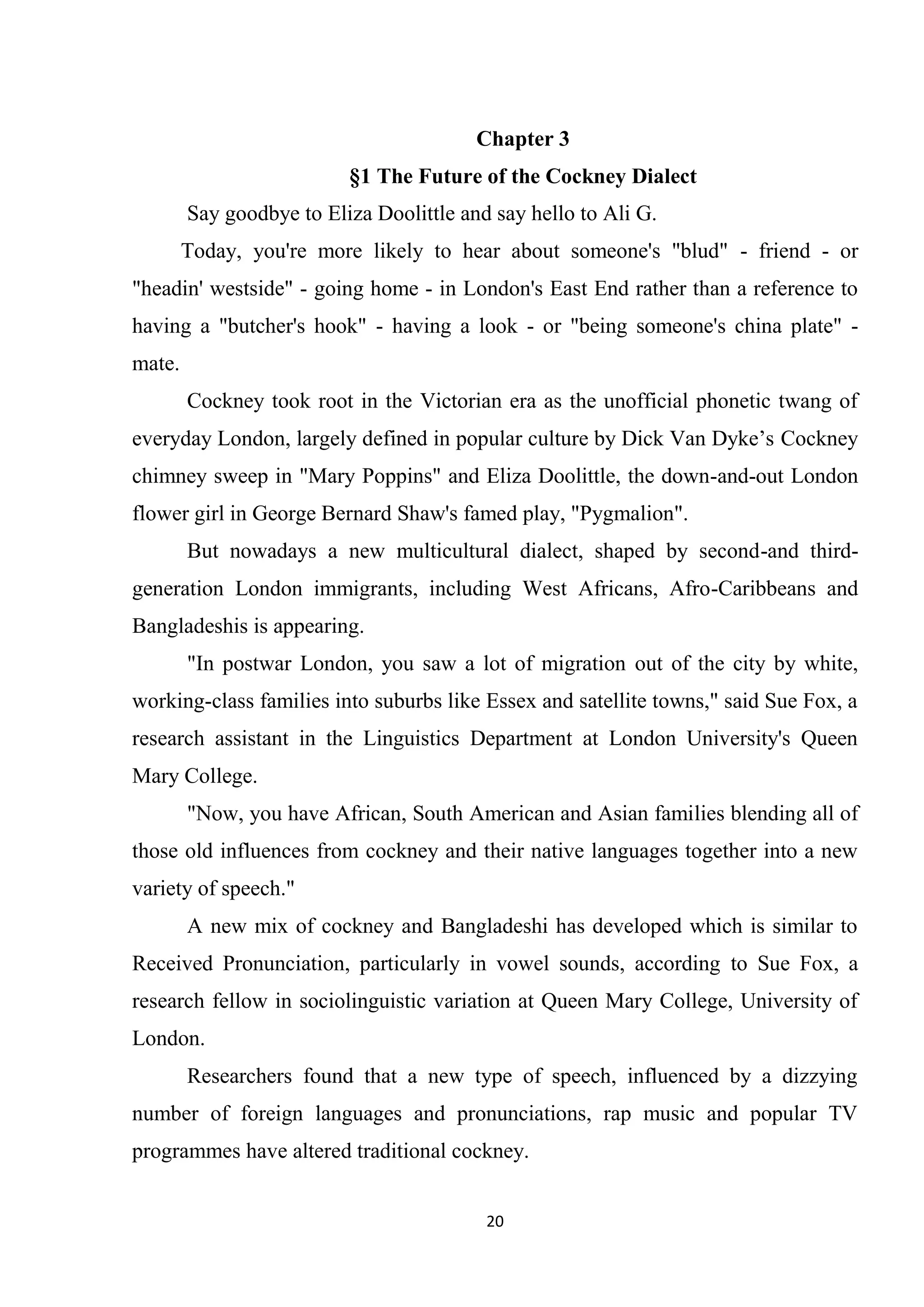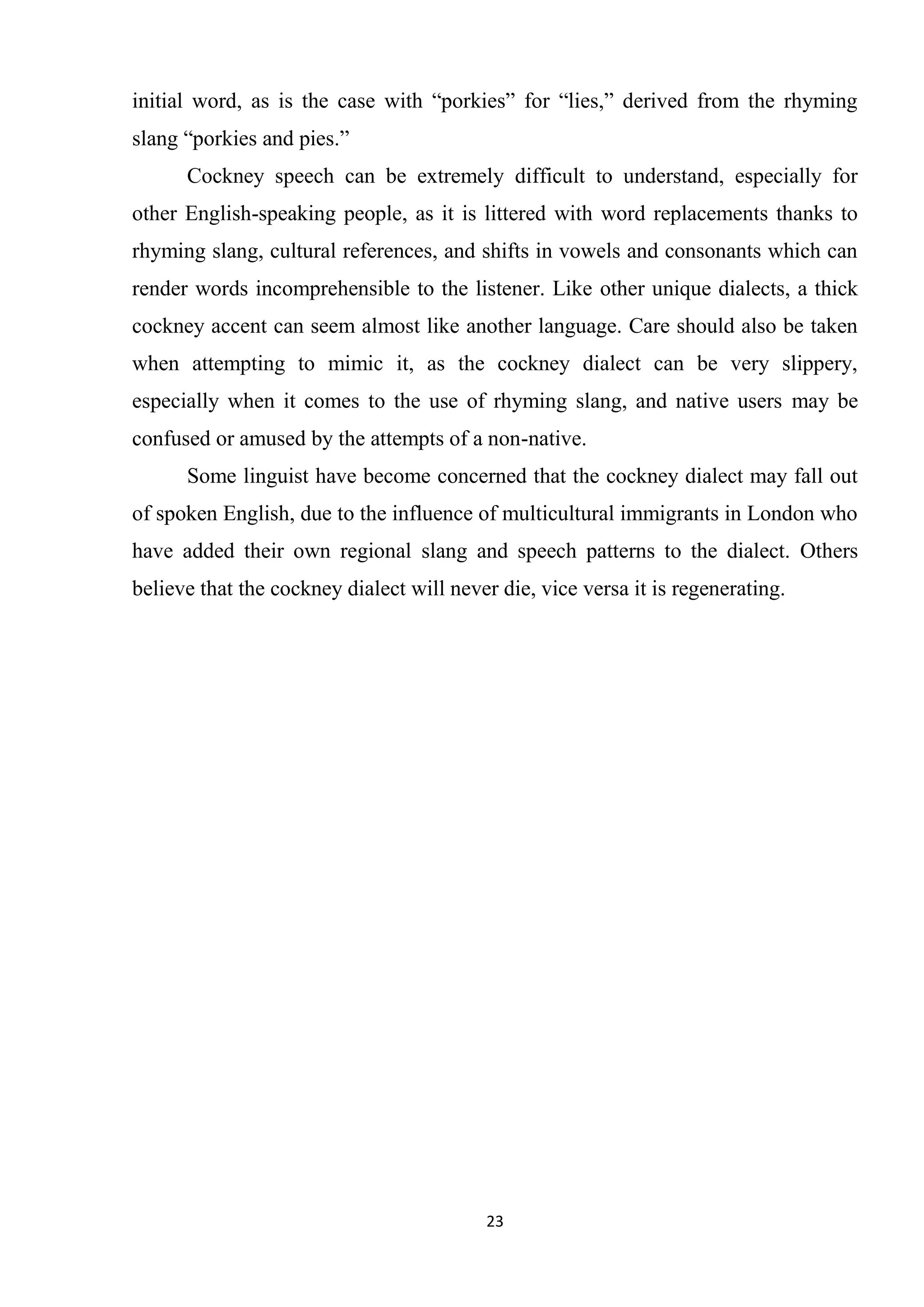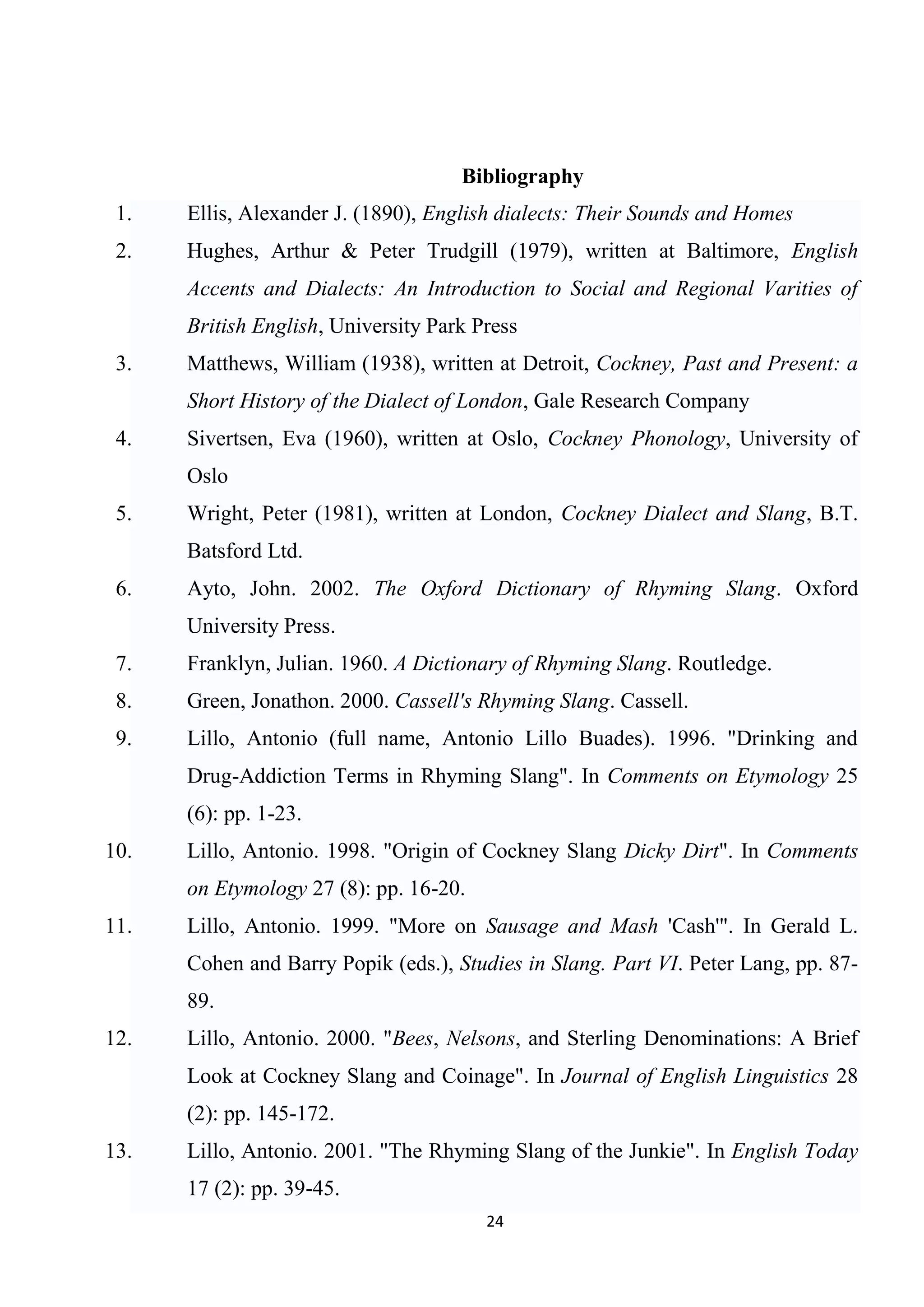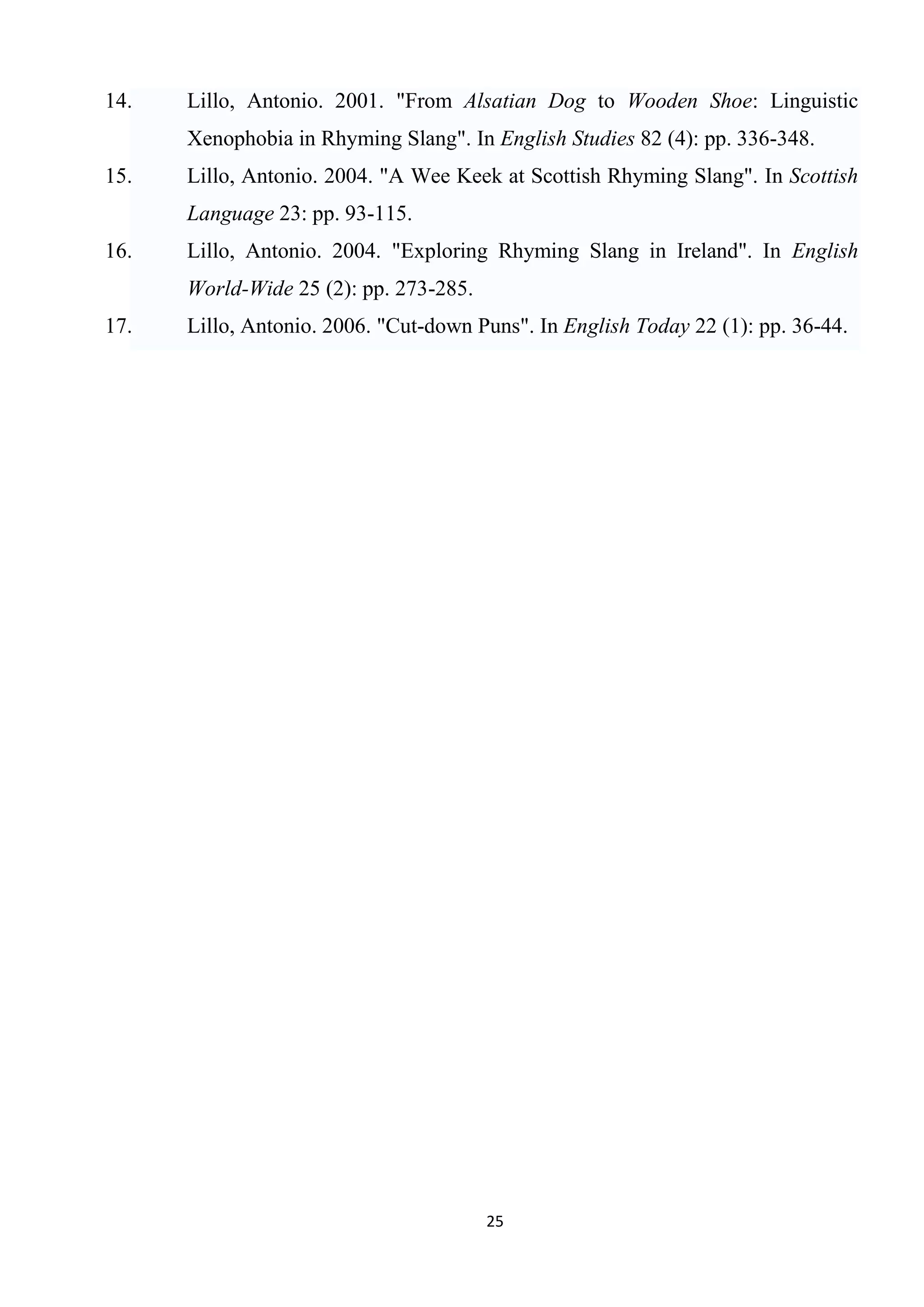This document provides an overview of the Cockney dialect spoken in London, England. It discusses the etymology and origins of the term "Cockney" and defines a Cockney as someone born within earshot of the Bow Bells church. The traditional core area of the Cockney dialect is the East End of London, though the dialect has spread to surrounding areas due to migration. The document examines some of the typical features of Cockney speech, including its distinctive accent, rhyming slang, and borrowings from other languages. It traces the history and development of the Cockney dialect over time.
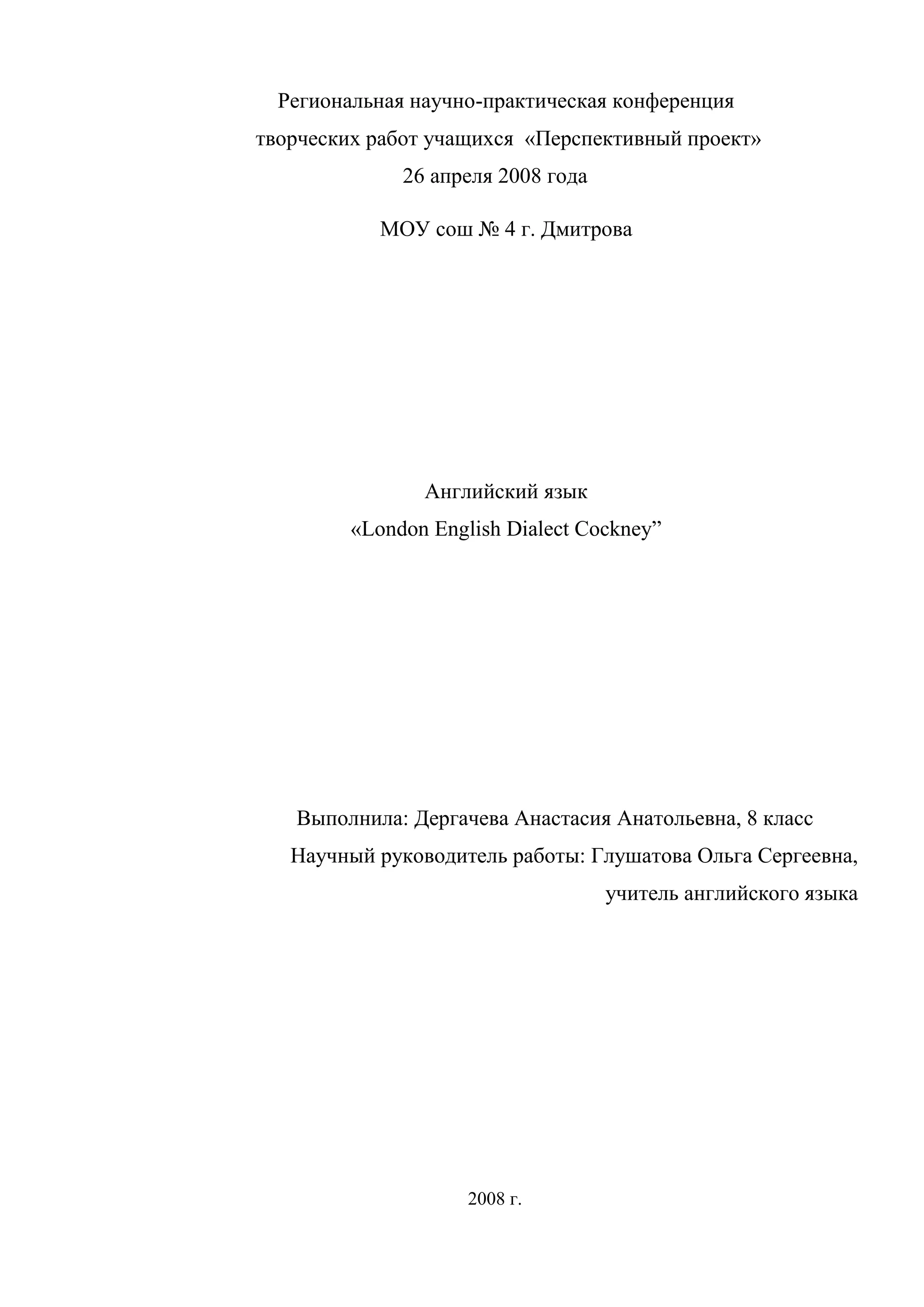
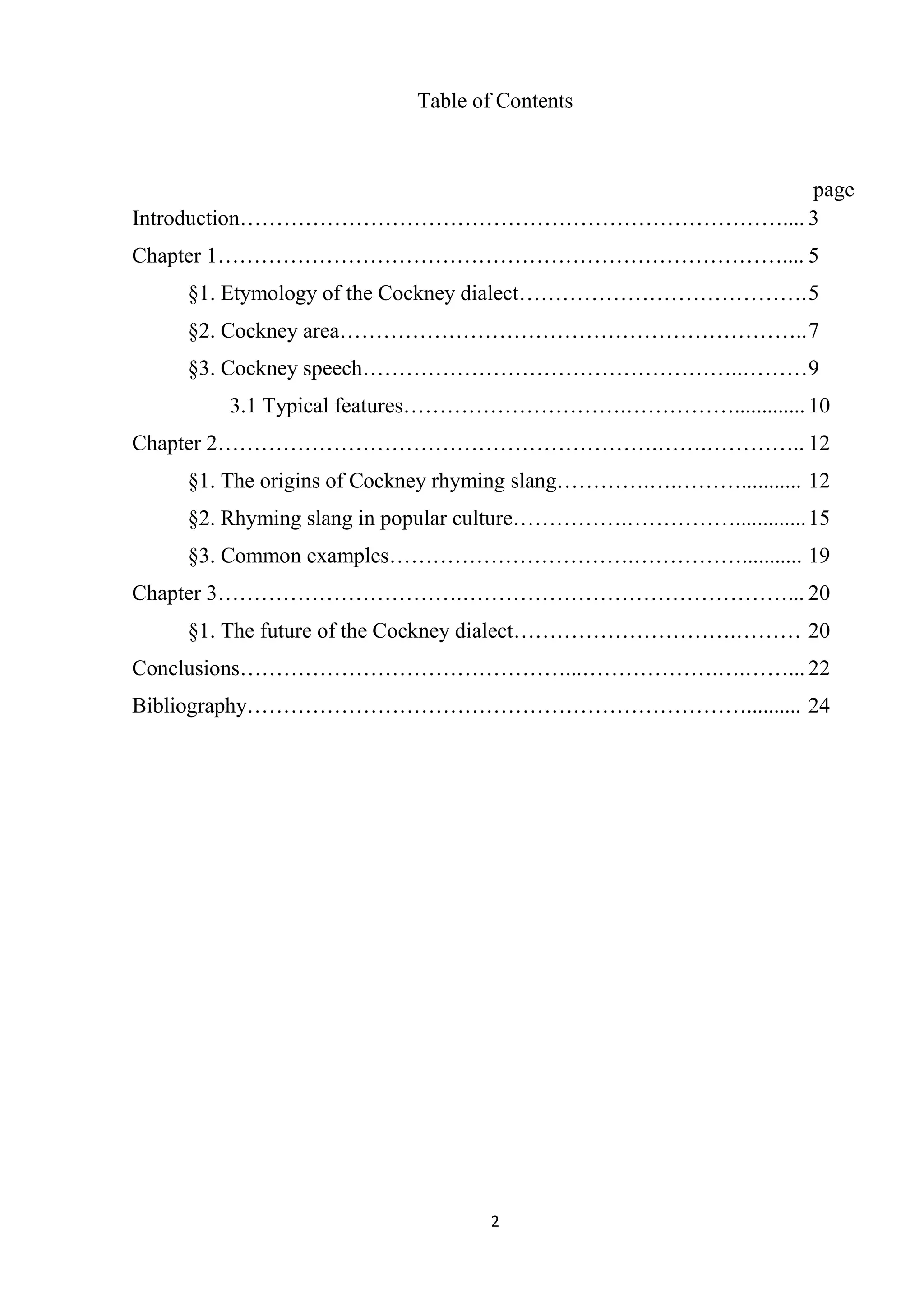
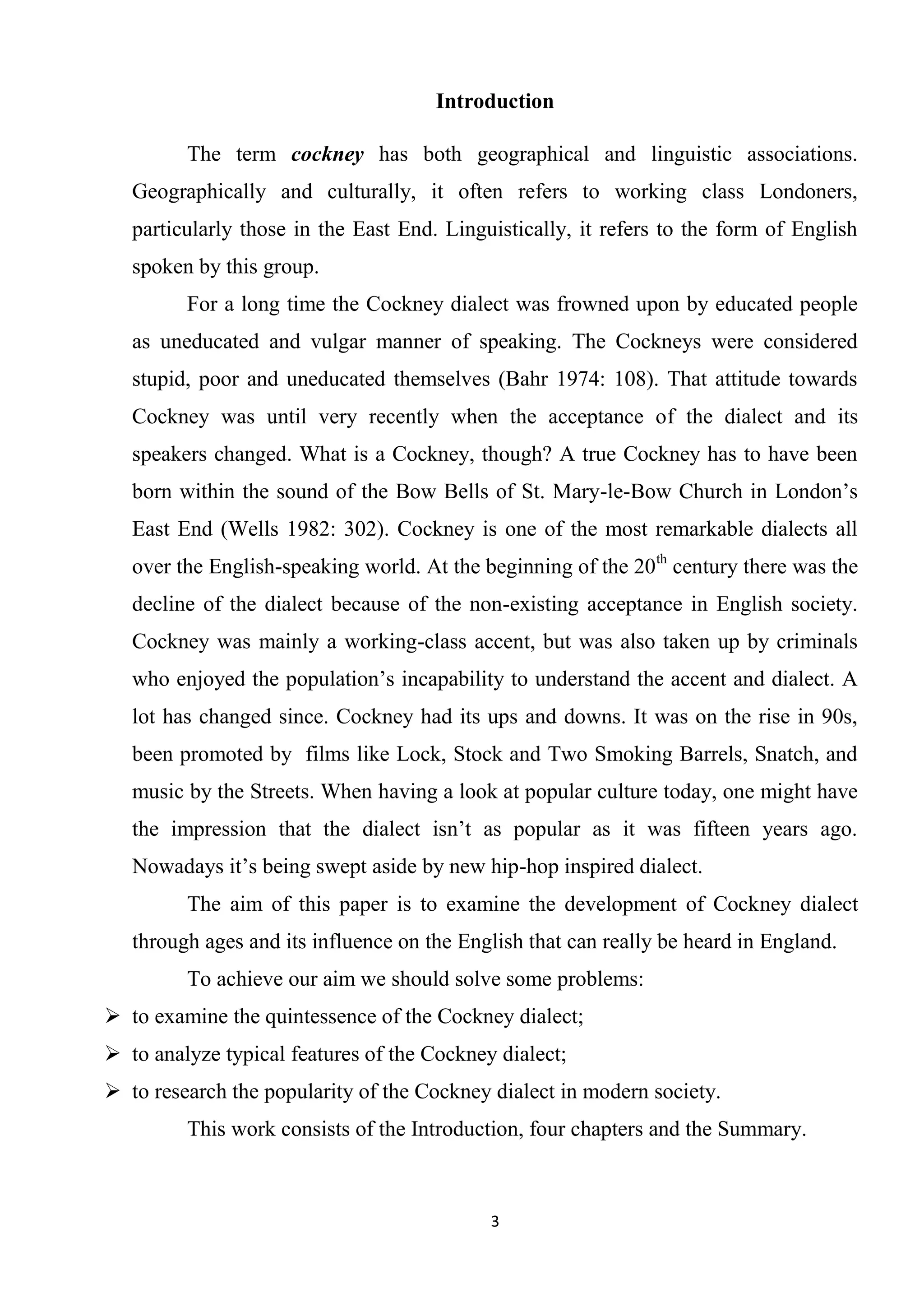
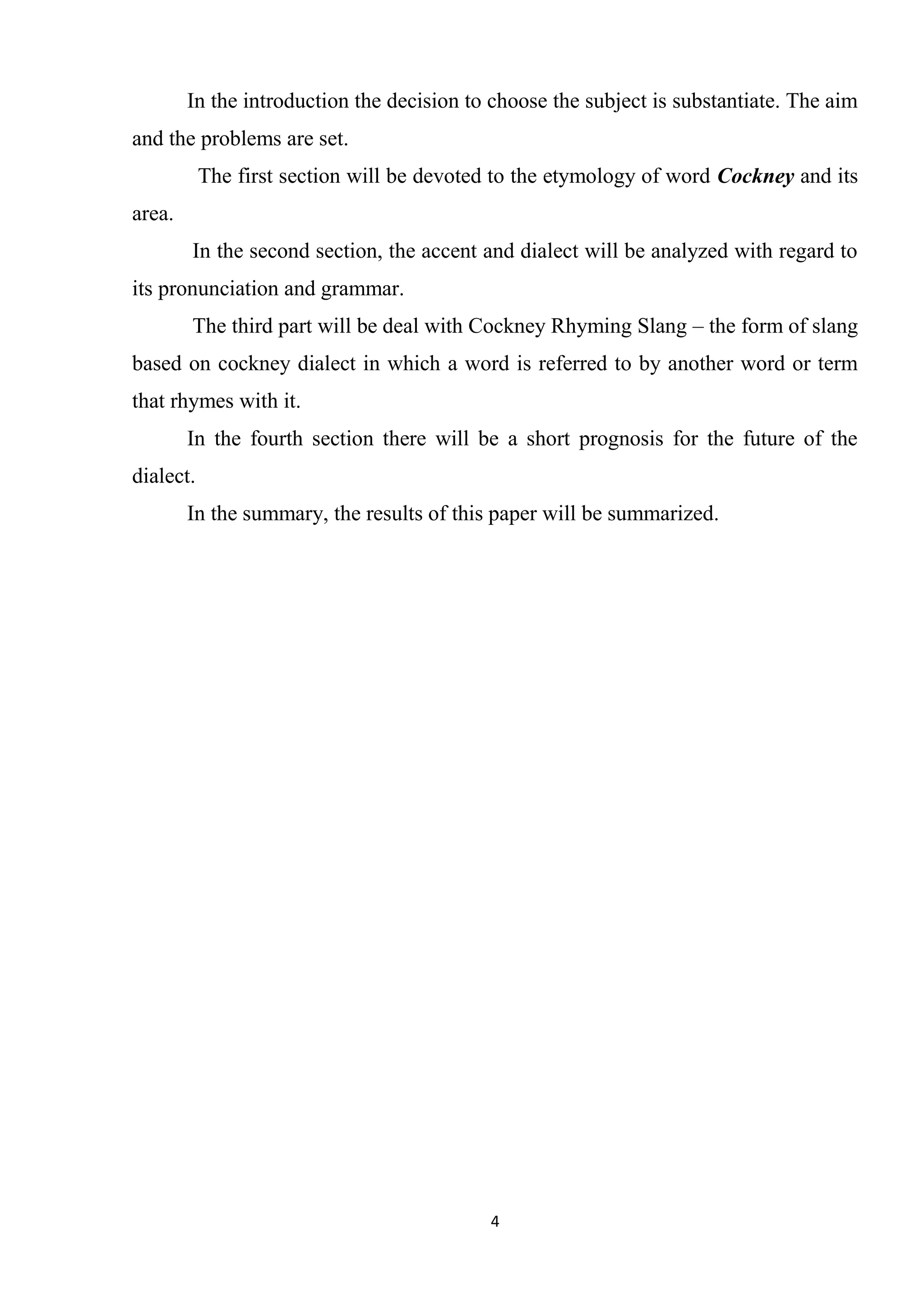
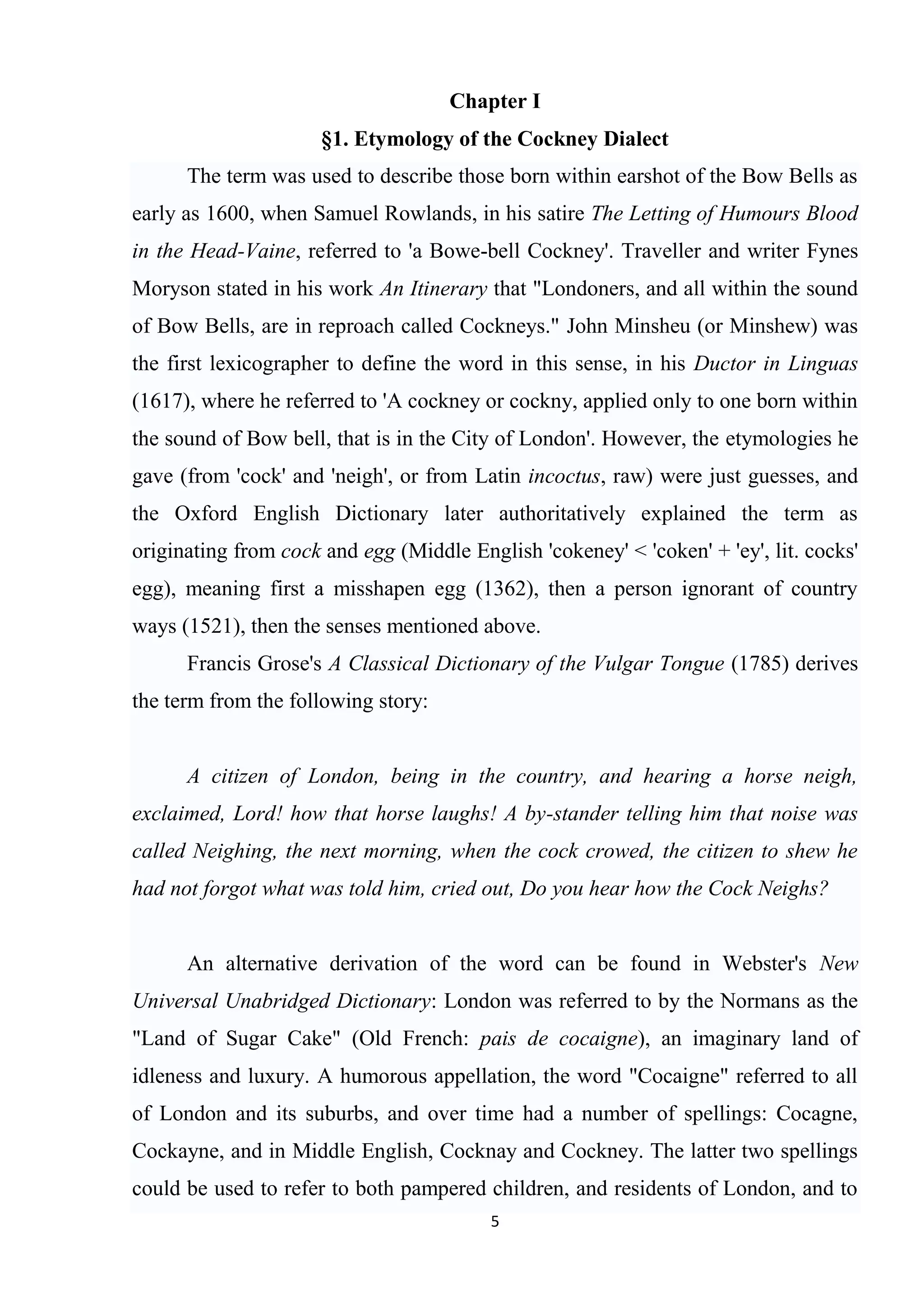
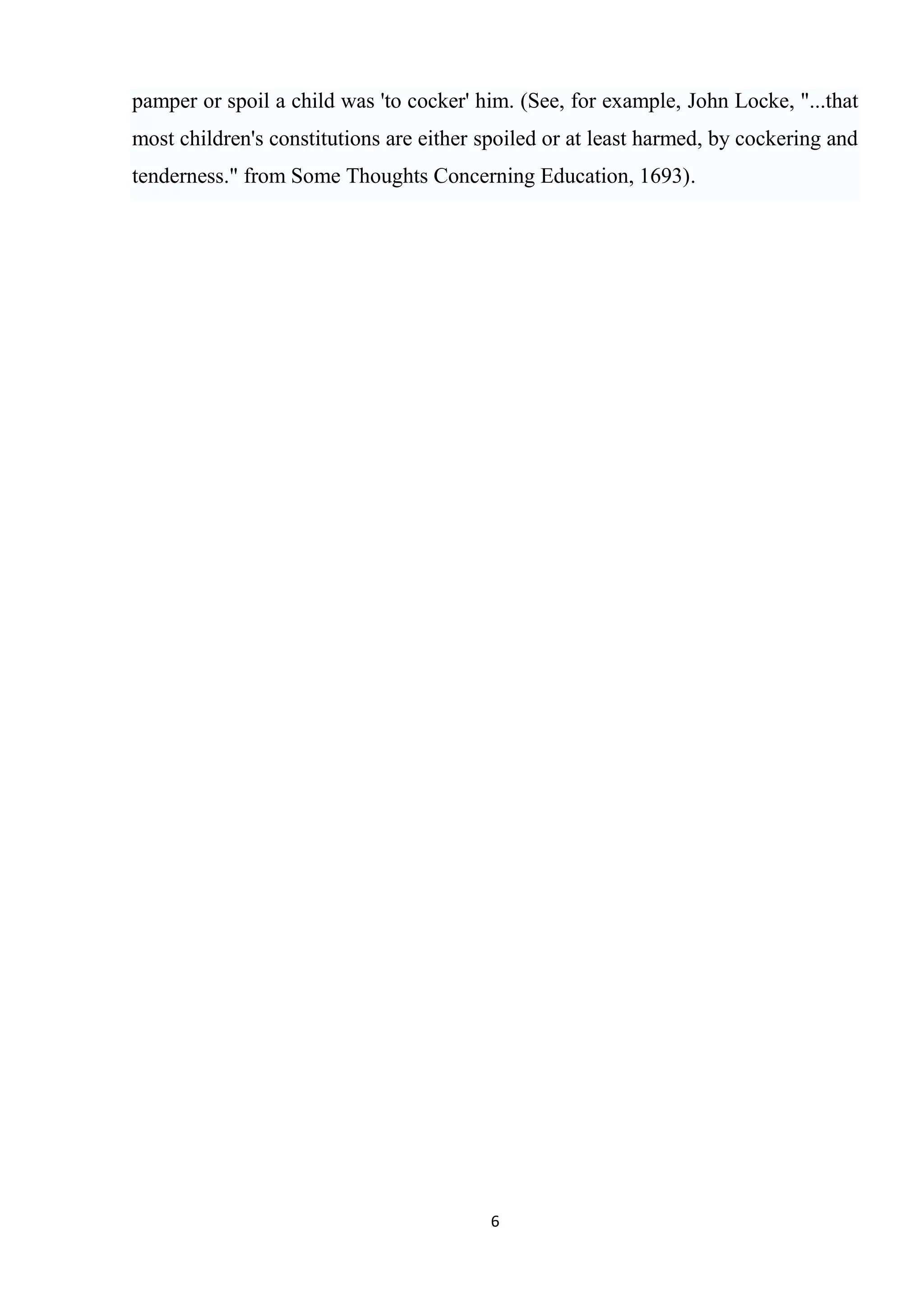
![§2 Cockney Area
The region in which "Cockneys" reside has changed over time, and is no
longer the whole of London. As mentioned in the introduction, the traditional
definition is that in order to be a Cockney, one must have been born within earshot
of the Bow Bells. However, the church of St Mary-le-Bow was destroyed in 1666
by the Great Fire of London and rebuilt by Sir Christopher Wren. After the bells
were destroyed again in 1941 in The Blitz of World War II, and before they were
replaced in 1961, there was a period when by this definition no 'Bow-bell'
Cockneys could be born. The use of such a literal definition produces other
problems, since the area around the church is no longer residential and the noise of
the area makes it unlikely that many people would be born within earshot of the
bells anymore [Wright 1980:11].
A study was carried by the city in 2000 to see how far the Bow Bells could
be heard, and it was estimated that the bells would have been heard six miles to the
east, five miles to the north, three miles to the south, and four miles to the west.
Thus while all East Enders are Cockneys, not all Cockneys are East Enders.
The traditional core neighbourhoods of the East End are Bethnal Green,
Whitechapel, Spitalfields, Stepney, Wapping, Limehouse, Poplar, Millwall,
Hackney, Shoreditch, Bow, and Mile End. The area gradually expanded to include
East Ham, Stratford, West Ham and Plaistow as more land was built upon.
Migration of Cockneys has also led to migration of the dialect. Ever since
the building of the Becontree housing estate, the Barking & Dagenham area has
spoken Cockney. As Chatham Dockyard expanded during the 18th century, large
numbers of workers were relocated from the dockland areas of London, bringing
with them a "Cockney" accent and vocabulary. Within a short period this famously
distinguished Chatham from the neighbouring areas, including the City of
Rochester, which had the traditional Kentish accent.
In Essex, towns that mostly grew up from post-war migration out of London
(e.g. Basildon, Harlow and West Horndon) often have a strong Cockney influence
on local speech. However, the early dialect researcher A.J. Ellis believed that
7](https://image.slidesharecdn.com/cockneydialect-121122004432-phpapp01/75/Cockney-dialect-7-2048.jpg)
![Cockney developed due to the influence of Essex dialect on London speech. [ Ellis
1890:35, 57, 58]
8](https://image.slidesharecdn.com/cockneydialect-121122004432-phpapp01/75/Cockney-dialect-8-2048.jpg)
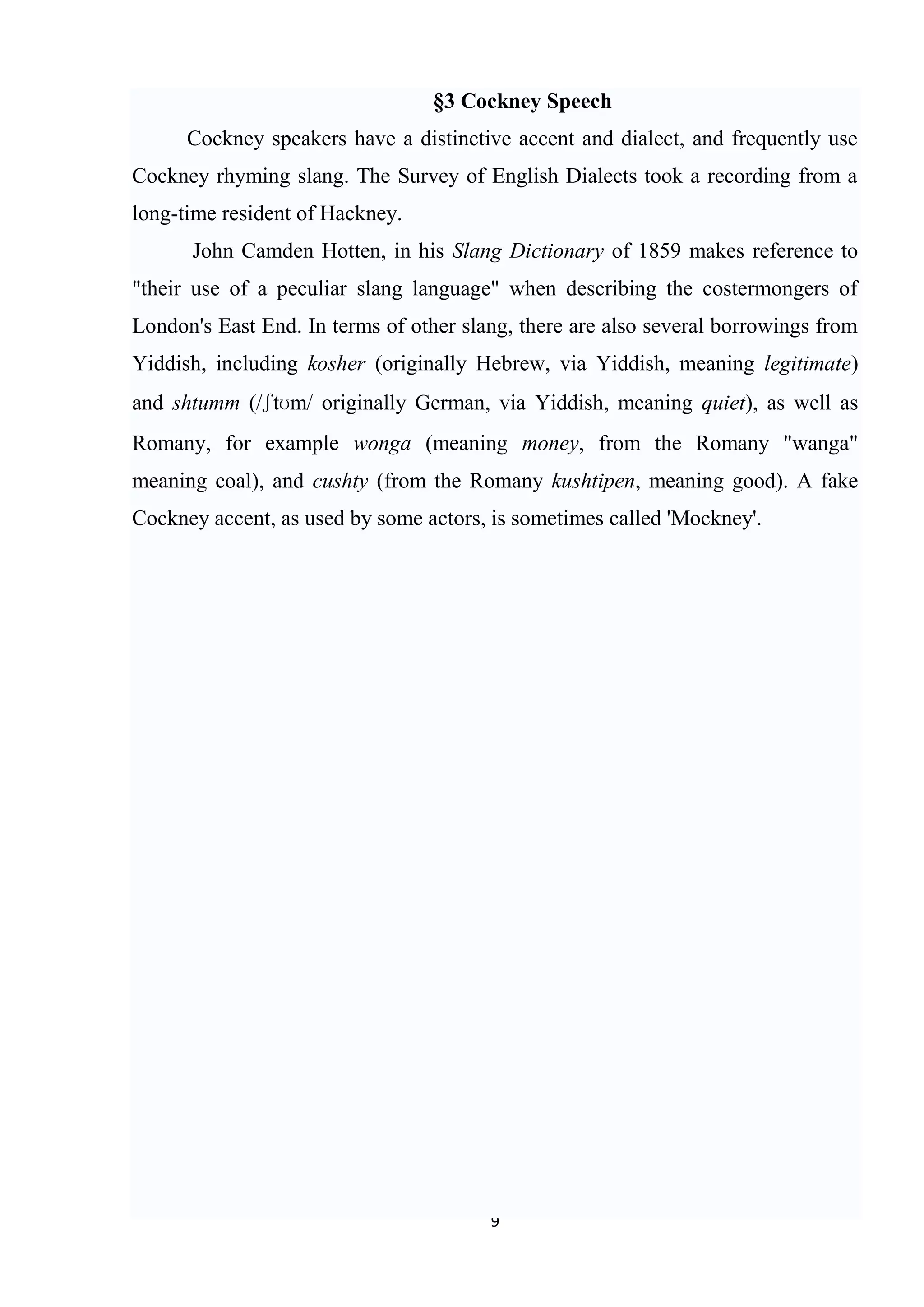
![3.1. Typical features
H-dropping [Linguistics 110 Linguistic Analysis: Sentences &
Dialects, Lecture Number Twenty One — Regional English Dialects English
Dialects of the World]
Broad /ɑ:/ (in words such as bath, path, demand, etc), which
originated in London but has now spread across the south-east and into Received
Pronunciation. However, there are exceptions to this rule; for example, the word
maths, whose pronunciation often surprises people from the North or the South-
West.[Wright 1980:136-137]
T-glottalisation: Use of the glottal stop as an allophone of /t/ in
various positions, including after a stressed syllable [Sivertsen 1960:111], [Hughs &
Trudgill 1979:34]. /t/ may also be flapped intervocalically. [Sivertsen 1960:109]
Glottal stops also occur, albeit less frequently for /k/ and /p/, and
occasionally for mid-word consonants. For example, Richard Whiteing spelt
"Hyde Park" as Hy' Par' . Like and light can be homophones. "Clapham" can be
said as Cla'am. [Wright 1980:136-137]
Loss of dental fricatives: [Sivertsen 1960:124]
/θ/ becomes [f] in all environments. [mæfs] "maths"
/ð/ becomes [v] in all environments except word-initially when it is
[d]. [bɒvə] "bother," [dæɪ] "they." Very occasionally, this occurs mid-word, as
"Bethnall Green" can become Bednall Green. [Wright 1980: 137]
Diphthong alterations:
/eɪ/ → [æɪ]: [bæɪʔ] "bait" [Hughs & Trudgill 1979:39-41]
/əʊ/ → [æʉ]: [kʰæʉʔ] "coat"
/aɪ/ → [ɑɪ]: [bɑɪʔ] "bite"
/aʊ/ may be [æə]: [tʰæən] "town"
Other vowel differences include
10](https://image.slidesharecdn.com/cockneydialect-121122004432-phpapp01/75/Cockney-dialect-10-2048.jpg)
![ /æ/ → [ɛ] or [ɛi] [t n] "tan" [Hughs & Trudgill 1979:35]
/ʌ/ → [ɐ]
/ɔː/ → /oː/ when in non-final position
/iː/ → [əi] [bəiʔ] "beet"
/u:/ → [əʉ] or [ʉ:] [bʉ:ʔ] "boot"
Vocalisation of dark l, hence [mɪowɔ:] for Millwall. The actual
realization of a vocalized /l/ is influenced by surrounding vowels and it may be
realized as [u], [o], or [ɤ]. [Matthews 1938:35]
Cockney has been occasionally described as replacing /r/ with /w/. For
example, thwee instead of three, fwasty instead of frosty. Peter Wright, a Survey of
English Dialects fieldworker, concluded that this was not a universal feature of
Cockneys but that it was more common to hear this in the London area than
anywhere else in Britain. [Matthews 1938:78]
As with many urban dialects, Cockney is non-rhotic. A final -er is
often pronounced as [ə]. Words such as car, far, park, etc. can have an open [ɑ:].
An unstressed final -ow is pronounced [ə]. This is common to most
traditional, Southern English dialects except for those in the West Country.
Grammatical features:
Use of me instead of my, for example, "At's me book you got 'ere ."
[Wright 1980:135]
Use of ain't instead of isn't, am not, are not, has not, and have not
Use of double negatives, for example "I didn't see nothing."
Most of the features mentioned above have, in recent years, partly spread
into more general south-eastern speech, giving the accent called Estuary English;
an Estuary speaker will use some but not all of the Cockney sounds.
11](https://image.slidesharecdn.com/cockneydialect-121122004432-phpapp01/75/Cockney-dialect-11-2048.jpg)
